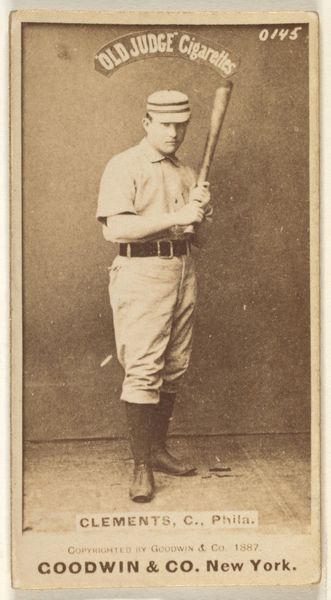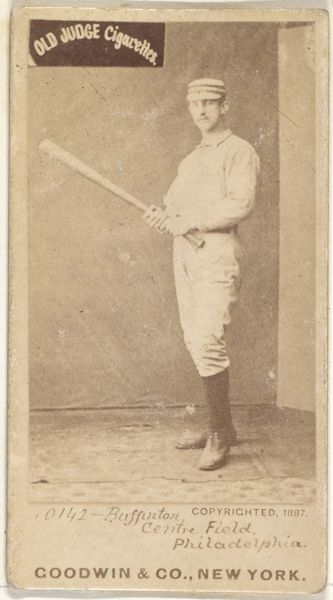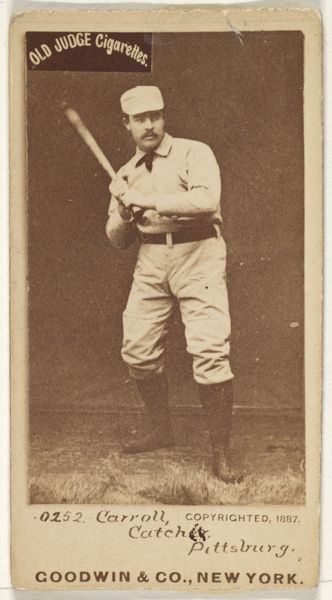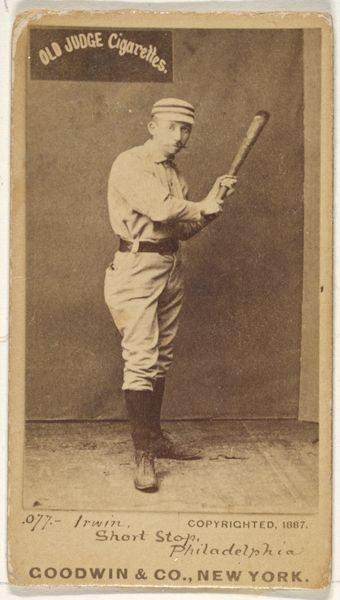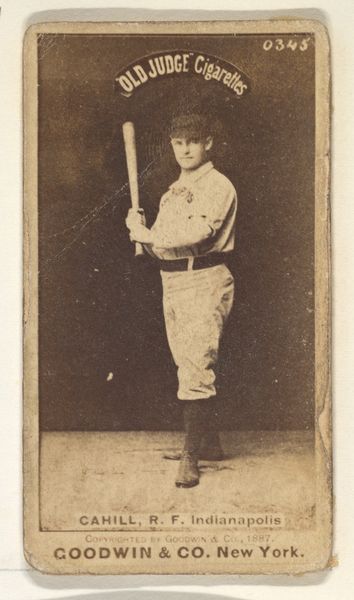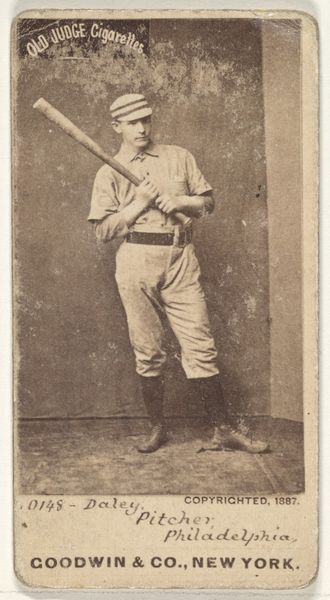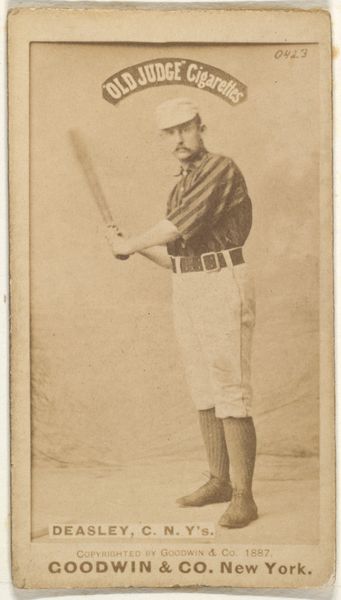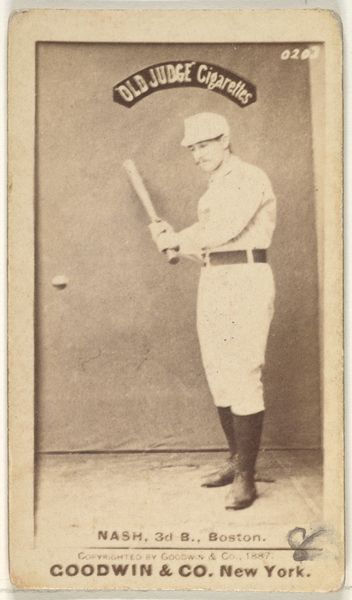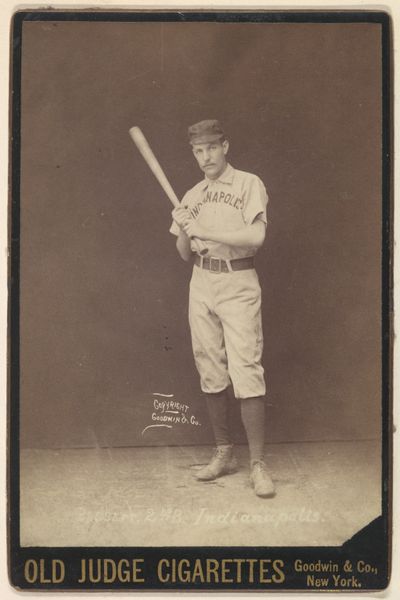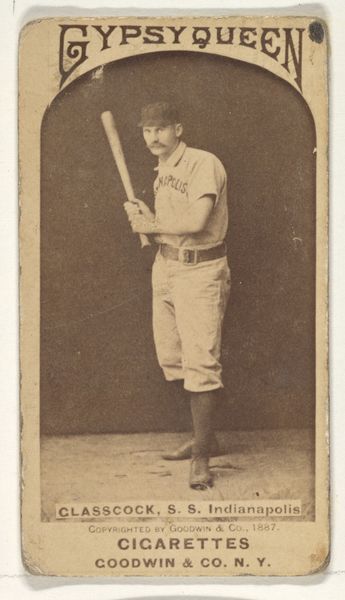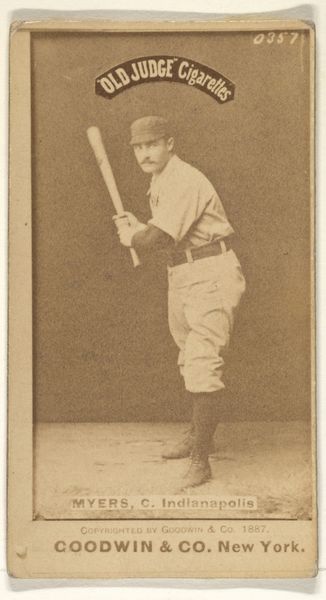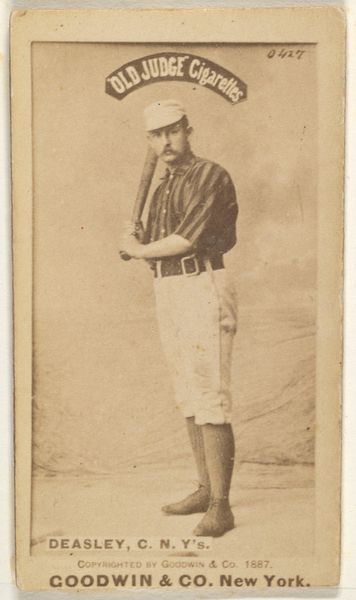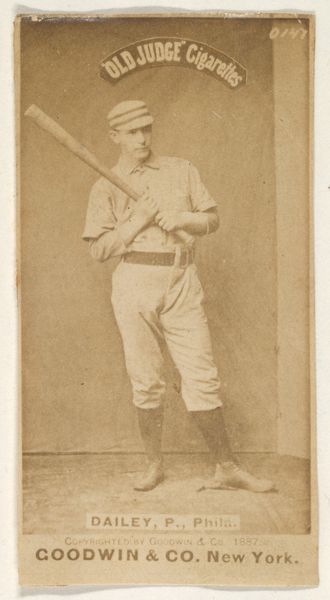
Thomas Francis Michael "Tommy" McCarthy, 2nd Base, Philadelphia, from the Old Judge series (N172) for Old Judge Cigarettes 1887
0:00
0:00
print, photography, albumen-print
#
portrait
#
16_19th-century
# print
#
baseball
#
photography
#
historical photography
#
men
#
genre-painting
#
athlete
#
academic-art
#
albumen-print
#
realism
Dimensions: sheet: 2 11/16 x 1 3/8 in. (6.9 x 3.5 cm)
Copyright: Public Domain
Curator: Goodwin & Company's albumen print from 1887 presents Tommy McCarthy, the Philadelphia second baseman. It’s from their "Old Judge" series of baseball cards. Editor: What strikes me immediately is the stark, almost austere presentation. The tonal range is quite limited. The figure occupies nearly the entire frame, but it feels very contained. Curator: The composition is indeed economical. The limited tonal range that you describe contributes to an overriding sense of balance and restraint, particularly in the figure's pose and the slightly averted gaze. Semiotically, consider how the averted gaze and controlled body language could function to depict notions of discipline and concentration, vital attributes for a professional athlete in the late 19th century. Editor: But let’s not ignore its original purpose. These weren’t fine art prints intended for museum walls; they were advertisements included in cigarette packs. Think about the material context – the cheap cardboard, the mass production. These images were commodities, designed to promote the consumption of tobacco. Curator: Precisely. The series format also contributes to a network of images. One needs the material consumption context that you outline in order to really appreciate how this type of production prefigures early cinema and motion studies. Editor: It's fascinating to consider the process by which this photograph, initially a promotional object, is now preserved and presented as an object of artistic merit. It prompts us to think about what has changed throughout the history of our culture: the value systems that allow mass produced sports advertising ephemera to become something of value, preserved, and displayed in institutions like The Met. Curator: It's a powerful demonstration of how notions of “art” evolve, particularly when analyzed across axes of formal composition and the processes through which its very materiality took form. Editor: Right, considering all these material processes reveals the shifting layers of cultural meaning embedded within a single image.
Comments
No comments
Be the first to comment and join the conversation on the ultimate creative platform.
